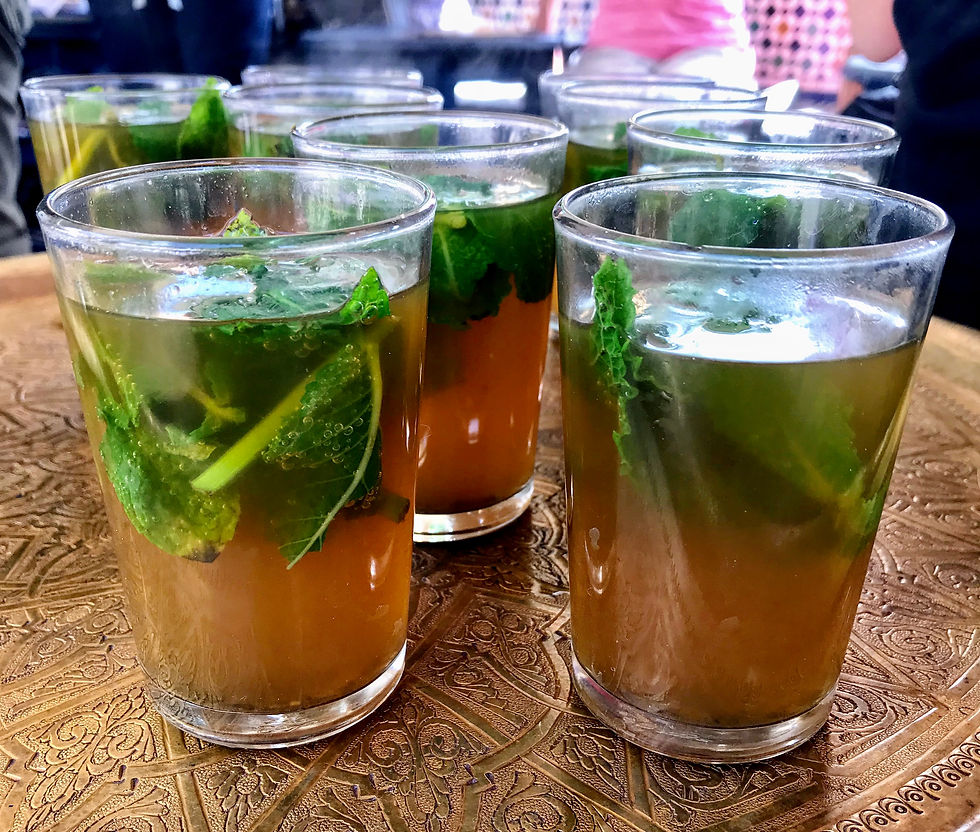Food stories from Morocco
- Shishir Dhulla
- Jun 25, 2020
- 3 min read
I travelled to Morocco in 2018 and visited several places like Marrakech, Casablanca, Fez, Rabat & Meknes over a week long trip. I specifically chose this trip since I wanted to visit the imperial markets that still exist.
When I discussed my plans with friends and family, the first question was - you are travelling to an African Arabic country. How will you manage vegetarian food? I did a bit of research over the Internet and figured out that vegetarian food could be easily managed. Moroccan cuisine is one of the most diversified cuisine as a result of centuries-long interaction of Morocco with the outside world. Spices are used extensively in the Moroccan cuisine.
While most places will serve non-vegetarian food, they are used to tourists and can well understand your preference for vegetarian food. I enjoyed the food on this trip.
The most popular drink is a green tea with mint leaves and other ingredients. Tea occupies a very important place in the culture of Morocco and is considered an art form.

It is served not only at mealtimes but all through the day, and it is especially a drink of hospitality, commonly served whenever there are guests. It is served to guests, and it is impolite to refuse it.

My host at the riad invited me to his kitchen and made some fresh mint tea for me with loads of sugar (that's how the locals prefer it). There was a platter of snacks to go with the tea too.

A big part of the daily meal is bread. Bread in Morocco is principally from durum wheat semolina known as khobz. Bakeries are very common throughout Morocco and fresh bread is a staple in every city, town and village. The most common is whole grain coarse ground or white flour bread. There are also a number of flat breads and pulled unleavened pan-fried breads.

I got well made salads, boiled legumes mashed with spices (not sure what the platter / dish was called though).


Couscous also seemed to be very popular in Morocco. Couscous is traditionally made from the hard part of the durum, the part of the grain that resisted the grinding of the millstone. The semolina is sprinkled with water and rolled with the hands to form small pellets, sprinkled with dry flour to keep them separate, and then sieved. Any pellets that are too small to be finished granules of couscous fall through the sieve and are again rolled and sprinkled with dry semolina and rolled into pellets. This labor-intensive process continues until all the semolina has been formed into tiny granules of couscous. It was served with a mild broth of carrots, boiled potatoes and various legumes.

Tagine is a North African dish cooked in the tagine pot. Tagine is closely associated with Moroccan cuisine, where slow-cooked savory stews made with meat, poultry, or fish, are cooked with vegetables, aromatic spices, dried fruit, and nuts. I could easily get a vegetarian version of the Tagine all over Morocco. I had first tasted a Moroccan tagine rice in Mumbai at Spesso (Nariman Point) and can say that it was no-where near to the real tagine. I actually enjoyed the Indian version at Spesso more than the authentic Tagine in Morocco.


Freshly squeezed orange juice was my go-to drink in Morocco. Before leaving Morocco, I also tried out some spaghetti at one of the restaurants and it was equally well made.

Morocco has a strong influence of European and Mediterranean cuisines, which showed up during this trip. A whole bunch of travelers from various countries made this trip even more enjoyable. It was fun discussing various cultures and food with folks around the world.


Comentários